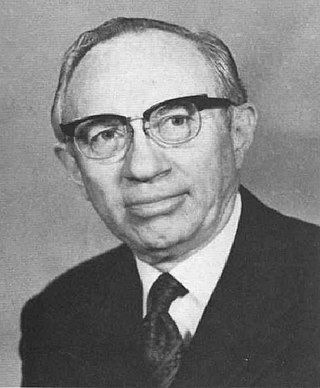
Gordon Bitner Hinckley was an American religious leader and author who served as the 15th president of the Church of Jesus Christ of Latter-day Saints from March 1995 until his death in January 2008 at age 97. Considered a prophet, seer, and revelator by church members, Hinckley was the oldest person to preside over the church in its history until Russell M. Nelson surpassed his age in 2022.
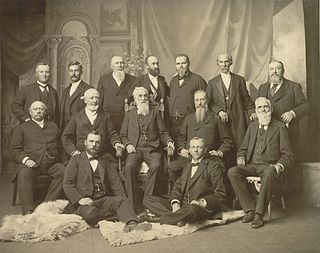
In the Church of Jesus Christ of Latter-day Saints, the Quorum of the Twelve Apostles is one of the governing bodies in the church hierarchy. Members of the Quorum of the Twelve Apostles are apostles, with the calling to be prophets, seers, and revelators, evangelical ambassadors, and special witnesses of Jesus Christ.
A ward is a local congregation in the Church of Jesus Christ of Latter-day Saints, with a smaller local congregation known as a branch.

David Oman McKay was an American religious leader and educator who served as the ninth president of the Church of Jesus Christ of Latter-day Saints from 1951 until his death in 1970. Ordained an apostle and member of the Quorum of the Twelve Apostles in 1906, McKay was an active general authority for nearly 64 years, longer than anyone else in LDS Church history.
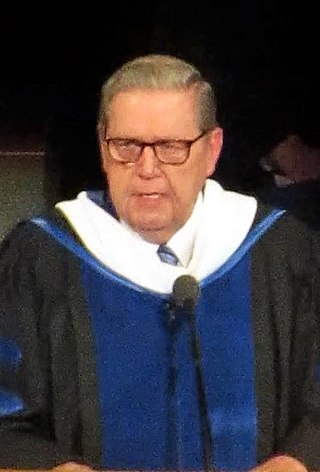
Jeffrey Roy Holland is an American educator and religious leader. He served as the ninth president of Brigham Young University (BYU) and is the acting president of the Quorum of the Twelve Apostles of the Church of Jesus Christ of Latter-day Saints. As a member of the Quorum of the Twelve, Holland is accepted by the church as a prophet, seer, and revelator. Currently, he is the third most senior apostle in the church.

Charles William Penrose was a member of the Quorum of the Twelve Apostles of the Church of Jesus Christ of Latter-day Saints from 1904 to 1911. Penrose was also a member of the First Presidency, serving as a counselor to church presidents Joseph F. Smith and Heber J. Grant from 1911 until his death.
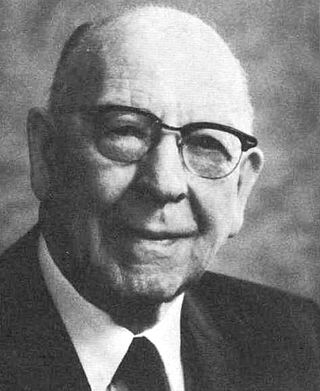
LeGrand Richards was a prominent missionary and leader in the Church of Jesus Christ of Latter-day Saints. He served as the seventh presiding bishop of the LDS Church from 1938 to 1952, and was then called as a member of the Quorum of the Twelve Apostles by church president David O. McKay. Richards served in the Quorum of the Twelve until his death in Salt Lake City, Utah, at the age of 96.
In the Latter Day Saint movement, a bishop is the highest office of the Aaronic priesthood. It is almost always held by one who holds the office of high priest in the Melchizedek priesthood. The Latter Day Saint concept of the office differs significantly from the role of bishops in other Christian denominations, being in some respects more analogous to a pastor or parish priest. Each bishop serves with two counselors, who together form a bishopric.
In the Church of Jesus Christ of Latter-day Saints, a church membership council is an ecclesiastical event during which a church member's status is considered, typically for alleged violations of church standards. If a church member is found to have committed an offense by a membership council, they may have their name removed from church records, or their church membership may be otherwise restricted. Church membership councils are at times referred to unofficially as church courts.
A mission of the Church of Jesus Christ of Latter-day Saints is a geographical administrative area to which church missionaries are assigned. Almost all areas of the world are within the boundaries of an LDS Church mission, whether or not any of the church's missionaries live or proselytize in the area. As of July 2020, there were 407 missions of the church.
Devin George Durrant is an American retired professional basketball player. From 1984 to 1985 he played with the Indiana Pacers and with the Phoenix Suns. He later played in European basketball leagues until 1988. In a Deseret News poll in the year 2000, he was voted one of the top 10 college basketball players in the state of Utah over the previous 100 years. In 1999, Sports Illustrated listed him as one of the 50 greatest Utah sports figures.

Joseph Leopold Wirthlin was the eighth presiding bishop of the Church of Jesus Christ of Latter-day Saints.

In the Church of Jesus Christ of Latter-day Saints, an area is an administrative unit that typically is composed of multiple stakes and missions. These areas are the primary church administrative unit between individual stakes or missions and the church as a whole.

Zera Pulsipher was a First Seven Presidents of the Seventy of the Church of Jesus Christ of Latter-day Saints. In that capacity, he provided leadership to the early Mormon community, most notably in the exodus of a large group of Saints from Kirtland, Ohio. He was also an active missionary who baptized Wilford Woodruff into the LDS Church.
John Richard Clarke was a general authority of the Church of Jesus Christ of Latter-day Saints from 1976 until his death. He has been a member of the church's presiding bishopric and a member of the Presidency of the Seventy.

Lyndon Whitney Clayton III has been a general authority of the Church of Jesus Christ of Latter-day Saints since 2001. He became a member of the church's Presidency of the Seventy in 2008 and was its senior president from 2015 until 2020.
Emanuel Abu Kissi is a Ghanaian medical doctor, founder of a medical clinic, and leader in the Church of Jesus Christ of Latter-day Saints. He was originally one of only a few black Africans to have served as an area seventy in the church. He was the official head of the LDS Church in Ghana during its "freeze" in 1989–90, and has worked extensively to increase interfaith relationships in Ghana.
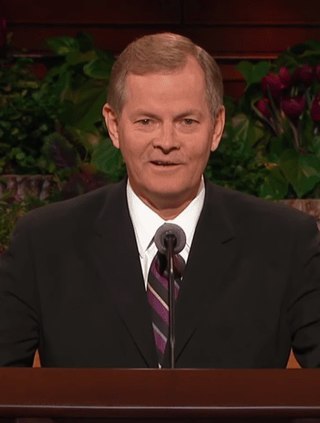
Gary Evan Stevenson is an American religious leader and former businessman who is a member of the Quorum of the Twelve Apostles of the Church of Jesus Christ of Latter-day Saints. He served previously as the church's Presiding Bishop and was the fourteenth man to serve in that position. He has been a general authority of the church since 2008. Stevenson was appointed to the Quorum of the Twelve Apostles in October 2015. Currently, he is the eleventh most senior apostle in the church.
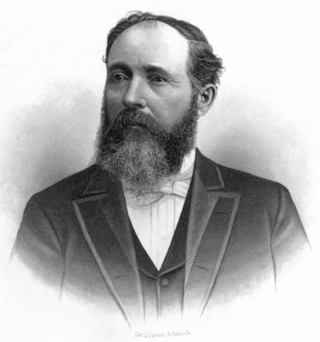
David John was a leading figure in Utah at the dawn of the 20th century. He served as a stake president in the Church of Jesus Christ of Latter-day Saints and a member of the Brigham Young University (BYU) board of trustees.
Tad Richards Callister was the 21st Sunday School General President of the Church of Jesus Christ of Latter-day Saints from 2014 to 2019. He served previously in the church as a general authority from 2008 to 2014, including as a member of the Presidency of the Seventy from 2011 to 2014.












